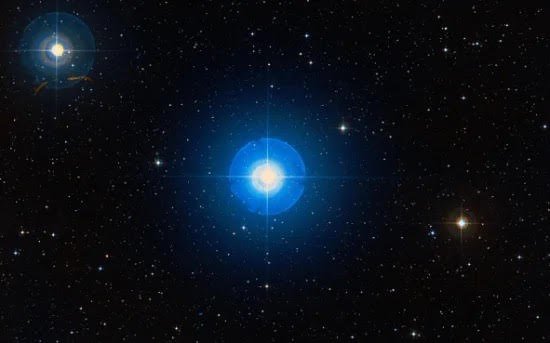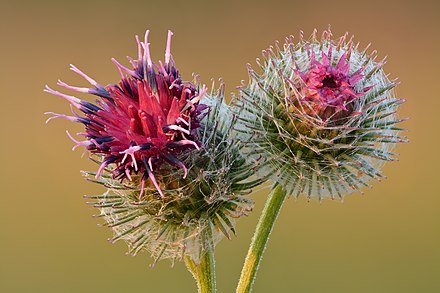Algorab
Algorab (Delta Corvi) 13°47’ tropical Libra, 18°43’ sidereal Virgo
Algorab (Delta Corvi) is a white subgiant star marking the left wing of Corvus, a small constellation in the Southern Celestial Hemisphere, and is found at the projected zodiacal longitude of 13°47’ tropical Libra, sidereal 18°43’ Virgo. Algorab has an apparent visual magnitude of +2.962.
Corvus in the Uranographia by Johannes Hevelius,1687
Mythos & Star Lore
Corvus is Latin for crow, and the constellation’s association with corvids can be traced back to the Babylonians who referred to the this group of stars as a Raven in their star catalogues. Algorab is designated as the Crow's Wing or the Wing of Corvus. The name is derived from الغراب al-ghuraab, which means “Crow” in Arabic. However, there is speculation as to which star of Corvus is designated as the Wing or Ala Corvus. Algorab is usually pinned in the left wing of the Crow with Gienah (Gamma Corvi) symbolizing the right wing. Both stars are only three degrees apart, though Algorab is closer to the ecliptic.
Ancient Mesopotamians saw the constellation of Corvus as the celestial figure of malignant deities and monsters, tieing these stars to the offspring of Tiamat (a creator goddess that was also known as the “Serpent of Darkness” or “Chaos of the Deep”. Tiamat birthed the first generation of deities, who her consort Apsu attempts to destroy but is killed in the process. In Tiamat’s rage she generates monsters as weapons against those who killed her consort. These monsters were seen as the embodiment of the dark forces of night.
The constellation has also been identified as the Euphratean lunar mansion wherein Im-dugud-khu, the “Great Storm Bird,” was seen to abide. In Babylonian cosmology the Corvus constellation was also sacred to Hadad, god of Rain and Storms. Its heliacal rising signaled the autumnal rainy season. The Raven was seen riding the serpent deity Ningishzida, a chthonic god associated with vegetation and victory in war. The Babylonians catalogued 71 constellations which were later absorbed by ancient Greek skywatchers around the 4th century BCE, and Ningishzida along with Ishtara and Ereshkigal later became tied to the constellation Hydra to the Greeks.
Anzû
In Greek cosmology, the Raven is Apollo's beloved totem. Legends speak on the white-feathered Raven being sent on missions by Apollo. The most well-known of these tell of spying on the Olympian god’s consort and fetching sacred waters. In both of these parables, Apollo is offended by the Raven's revelations or actions, and punishes Corvus by turning his white feathers black.
As far back as 650 BCE, Apollo’s temples were being built in alignment with the heliacal rising of Corvus. Temple sites of Apollo Oikos and Asclepius at Messene, Kos, Claros, Gortyna, and Phrygia all indicate that their orientations line up with calculated declinations coinciding with the brightest stars of Corvus (Gamma and Delta). These findings reinforce the associations of longevity and prophecy tied to Corvus, which were greatly sought after at the sanctuaries. Archeoastronomers found evidence that the temples built across a span of centuries also show that their architects were taking precession into account.
Apollo is the twin brother of Artemis, offspring of Zeus and the Titan goddess Leto. Apollo was worshipped as the deity of the Sun, of prophecy, music, poetry, plagues and healing, as well as archery with which he delivers retribution. He was known as the god who punishes and destroys the wicked, overbearing them with his arrows. Apollo was also called upon for divine intervention and to ward off evil. In these associations we find his relationship with Corvus, who in astrological magic is worked with for both punitive and protective warding magic
The Shinto in Japan also associated Corvids with their temples and welcomed them as divine messengers, bestowing prophetic vision and spiritual insight.
The Indic jyotish tradition sees the Corvus constellation as marking the thirteenth nakshatra, Hasta (the Hand). As messengers between the physical and spiritual realms, Corvids are seen as being able to carry the essence of our offerings to our ancestors. The Corvus constellation was seen to symbolize an Open Hand, representing the ability to manifest generosity and blessings. Hasta nakshatra is also tied to a solar deity, akin to Apollo, the Aditya Savitr who is a protector of all beings and guardian of the spiritworld.
In Chinese cosmology, Delta Corvi is part of the asterism of the Chariot, 軫宿 (Zhěn Sù), along with Gamma Corvi, Epsilon Corvi and Beta Corvi. Delta Corvi is referred to as 軫宿三 (Zhěn Sù sān), the Third Star of the Chariot. Zhěn Sù sān was tied to royal and military figures within dynasties. The Chariot is the last of the seven lunar mansions found in the Vermilion Bird of the South. The Vermilion Bird is one of Four Symbols of the Chinese constellations, and represents the fire element, the South direction and the season of Summer.
The Vermilion Bird on the gates of a Han Dynasty mausoleum
Astrological Magic
Ptolemy classified the stars of Corvus to be of the nature of Mars and Saturn combined, associating its influence to bestow “craftiness, greediness, ingenuity, patience, revengefulness, passion, selfishness, lying, aggressiveness, and material instincts, and sometimes causes its natives to become agitators."
Algorab is considered the most malefic of the Behenian stars and should be approached with caution. The Bodelein MS says of the Wing of Corvus’ sympathies, "burdock seed, leaves, and roots, with the tongue of a frog... makes men angry, hateful, daring, and evil-speaking, causes wicked dreams, drives demons away, and protects men against demons and evil winds."
Agrippa instructs on the talisman for the Wing of Corvus, "…they made the image of a Raven, or Snake, or of a Black Man cloathed in black; this maketh a man cholerick, bold, courageous, full of thoughts, a backbiter, and causeth naughty dreams; also it giveth the power of driving away evil spirits, and of gathering them together; it is profitable against the malice of Men, Devils and Winds."
Algorab sigil drawn by Agrippa
Plants & Gemstones
Algorab’s plant sympathies include Burdock (seeds, leaves, root). Its gemstone is Onyx.
Candles & Incense
Black candles and pungent incenses are appropriate for Algorab.
Burdock (Arctium tomentosum)
References
[1] Rosenberg, Diana K. Secrets of the Ancient Skies: Fixed Stars & Constellations in Natal & Mundane Astrology. Ancient Skies Press, 2012.
[2] Robson, Vivian. The Fixed Stars & Constellations in Astrology. Astrology Classics, 2005.
[3] Warnock, Christopher. The Mansions of the Moon: A Lunar Zodiac For Astrology & Magic. Renaissance Astrology, 2019.
[4] Warnock, Christopher. Fixed Star, Sign & Constellation Magic. Renaissance Astrology, 2019.
[5] Agrippa, Heinrich Cornelius. Three Books of Occult Philosophy, translated by Eric Purdue. Inner Traditions, 2021.






